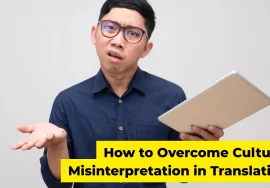
Translation Techniques
Importance of Translation Techniques:
Translation techniques are fundamental tools used by translators to convey meaning, nuances, and cultural nuances from one language to another while ensuring accuracy, clarity, and fluency in the translated text. Two primary translation techniques commonly employed by translators are direct translation and oblique translation. Understanding the differences between these techniques and their application is essential for producing high-quality translations that effectively convey the original meaning and intent of the source text.
Direct Translation Techniques
Direct translation techniques refer to methods of translating text from one language to another word-for-word without considering cultural nuances or idiomatic expressions that may not have direct equivalents in the target language. This approach can lead to awkward or inaccurate translations. Here are some examples of direct translation techniques:
- Word-for-Word Translation: This method translates each word individually without considering the overall context or syntax of the sentence. For example, translating “It’s raining cats and dogs” directly into French as “Il pleut des chats et des chiens.”
- Literal Translation: Similar to word-for-word translation, literal translation focuses on translating the words exactly as they appear in the source language, even if the result doesn’t make sense in the target language. An example would be translating the Spanish phrase “tomar el pelo” into English as “to take the hair,” instead of the correct idiomatic equivalent, “to pull someone’s leg.”
- Calque: Calque involves translating an expression or phrase by borrowing words from the source language directly into the target language. For instance, translating the German term “übermorgen” into English as “overmorrow,” even though the common English equivalent is “the day after tomorrow.”
- Borrowing: Borrowing involves directly taking a word from one language and incorporating it into another without translation. For example, English borrowed the word “sushi” from Japanese without changing its form.
Using direct translation techniques can result in misunderstandings or inaccuracies, so it’s important to consider the context and cultural nuances of the languages being translated.
Oblique Translation Techniques
Oblique translation techniques involve a more flexible and creative approach compared to direct translation techniques. Instead of translating word-for-word, oblique translation takes into account cultural nuances, idiomatic expressions, and context to provide a more accurate and natural translation. Here are some examples of oblique translation techniques:

- Cultural Adaptation: Cultural adaptation involves translating text in a way that preserves the cultural context and specific references unique to the source language. For example, translating the Japanese phrase “お疲れ様でした” as “Thank you for your hard work,” which conveys the intended meaning and acknowledges the cultural significance of the expression.
- Idiomatic Translation: In idiomatic translation, idioms and expressions are translated based on their meaning rather than their literal words. For instance, translating the French expression “coup de foudre” into English as “love at first sight,” capturing the idiom’s meaning rather than directly translating each word.
- Free Translation: Free translation allows for more flexibility in conveying the overall meaning of a text rather than adhering strictly to the literal translation. An example would be translating the Spanish phrase “irse por las ramas” as “to beat around the bush” in English, capturing the essence of the idiom.
- Transcreation: Transcreation goes beyond translation by adapting the content to suit the cultural nuances, tone, and style of the target audience. This technique is often used in marketing and creative content to ensure that the message resonates with the intended audience. For instance, adapting a slogan or tagline from one language to another while maintaining its impact and creativity.
Oblique translation techniques provide more natural and contextually appropriate translations compared to direct techniques, making the text more engaging and easier to understand for the target audience.
Translation techniques are essential for overcoming linguistic and cultural differences in communication. By employing the appropriate techniques based on the context and purpose of the translation, businesses and individuals can ensure that their message is accurately conveyed in different languages and cultures.











